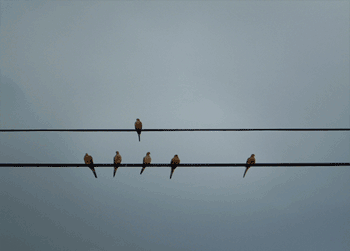Bird on a wire

So I was wondering...
Why do birds choose to sit on telephone cables instead of tree branches. I was driving down the road yesterday and saw a group of birds on the wires and I wondered "where did the birds used to sit before telephones?" My answer, obviously, was in trees and that the reason they were where they were was the overpopulation and deforestation of the world. Then I realized there were in fact many trees all around, of all different types and sizes...and NO BIRDS! Com'on stupid birds, sit in the trees like nature intended you to. Then I thought, after seeing many National Geographic specials, that no predators such as snakes or mongooses could reach a bird on a wire, but they could climb up a tree... but this is freakin New Jersey and there ain't no pythons around! So I don't know, let me know what you think.



